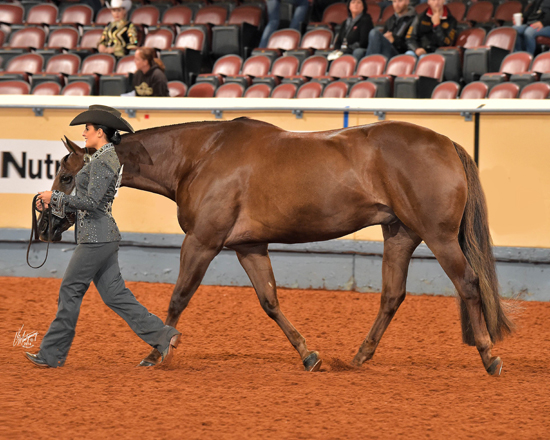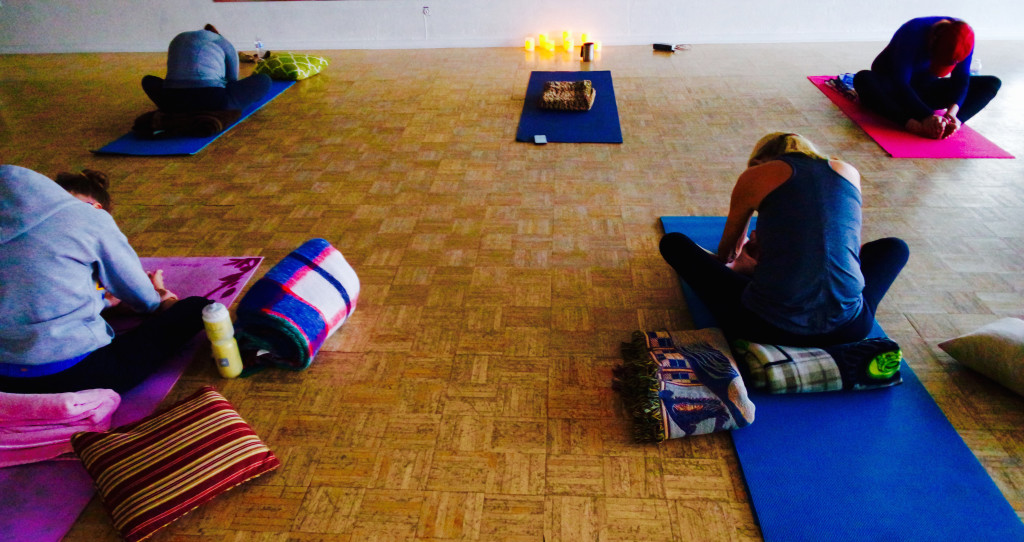 With the horse industry becoming so competitive and specialized, many exhibitors keep their horses in full-time training to stay at the top of their game. Although being at a trainer full-time keeps our horses in top shape, it can often make it difficult for exhibitors to get adequate time in the saddle. We know our horses can’t compete at the highest level, unless they are in excellent physical shape, but we often let ourselves off the hook when it comes to our own physical stamina.
With the horse industry becoming so competitive and specialized, many exhibitors keep their horses in full-time training to stay at the top of their game. Although being at a trainer full-time keeps our horses in top shape, it can often make it difficult for exhibitors to get adequate time in the saddle. We know our horses can’t compete at the highest level, unless they are in excellent physical shape, but we often let ourselves off the hook when it comes to our own physical stamina.
So, is it just as important for riders to be in good shape if they want to maximize their horse’s potential? American Quarter Horse Association and National Snaffle Bit Association exhibitor, Brittany Morgan, says the answer is definitely “yes.”
Morgan, a holistic health coach, dance teacher and owner of BamFab Health, a nutrition coaching company in Brawley, California, boasts a prestigious resume, including five time NSBA Reserve World Champion, two-time Congress Champion, and was recently AQHA All-Around Reserve Champion at the 2016 Lucas Oil AQHA World Championship. Morgan competes in the full gamut of classes including Halter, Equitation, Showmanship, Western Pleasure, Horsemanship, Trail and Western Riding. She said she believes putting the time in at home to get your body in peak shape can ensure peak performance in the show pen.
 “We expect our horses to stay in place and hold themselves every step they take, but if we are losing our balance or are not physically strong enough to keep up with them, it will start to show in how they move and perform overall. This is particularly important in classes like Equation, Horsemanship, and Showmanship which are judged on the rider. Having the stamina and balance to hold yourself in position and move with your horse will definitely affect your total score,” said Morgan.
“We expect our horses to stay in place and hold themselves every step they take, but if we are losing our balance or are not physically strong enough to keep up with them, it will start to show in how they move and perform overall. This is particularly important in classes like Equation, Horsemanship, and Showmanship which are judged on the rider. Having the stamina and balance to hold yourself in position and move with your horse will definitely affect your total score,” said Morgan.
Morgan is also a strong believer in doing something physical every day.
“That doesn’t mean it has to be super hard, but as riders we need to treat our bodies like any other athlete which means keeping it in shape and moving,” she said. “Cardio four days a week would be ideal and then adding strength training on off days.”
She is also a big believer in stretching.
“Stretching is key to keeping the body moving fluidly. If our muscles are tight all the time we aren’t able to really relax our legs down and around the horse. Horses are powerful animals and if we are tight and stiff while riding we will end up behind their movements or just not able to get in rhythm,” Morgan said. “I generally recommend 10-15 minutes of stretching every day; then having a day where you take a yoga class or dedicate a good 30-60 minutes to stretching.”
Generally, when we think of cardiovascular and strength exercise our minds jump to a gym and the often overwhelming line of treadmills, free weights and confusing circuit training machines. Although these are excellent tools for getting your body in primo condition, they are not the only option if these traditional forms of exercise do not appeal to you.
Morgan offered a different approach.
 “For me personally I love Pilates, barre and yoga. I teach a fusion of these three styles in my fitness classes, and I think these all help benefit riding,” she explained. “Pilates focuses on your ‘Power House’ or core which is great for creating stability when riding and being able to balance. Barre classes are great for strengthening the whole lower body but keeping the muscles long and lean. Yoga offers stretch, strength and balance, which is important because we need to learn to have relaxed muscles when riding while still being able to engage our muscles to hold ourselves up and in place without tension.”
“For me personally I love Pilates, barre and yoga. I teach a fusion of these three styles in my fitness classes, and I think these all help benefit riding,” she explained. “Pilates focuses on your ‘Power House’ or core which is great for creating stability when riding and being able to balance. Barre classes are great for strengthening the whole lower body but keeping the muscles long and lean. Yoga offers stretch, strength and balance, which is important because we need to learn to have relaxed muscles when riding while still being able to engage our muscles to hold ourselves up and in place without tension.”
For riders that do not have easy access to some of the specialized fitness classes that Morgan’s facility provides, certified Health Fitness Specialist, Thomas Orton, offers a simple routine for riders to follow each week. Orton generally sets his clients up with a routine of five days of cardiovascular exercise (walking, running, biking, or swimming) with two to three days of resistance training, such as the following circuit.
Resistance Exercise 1 working the chest muscles: (Beginner) Wall or table push-up; (Intermediate) Push-up with knees on the floor; (Advanced) Traditional push-up
Resistance Exercise 2 working the back muscles: (Beginner) Arm row bracing on a table: (Intermediate) Seated row with band; (Advanced) Floor Row with band
Resistance Exercise 3 working the legs: (Beginner) Sit to stand with chair; (Intermediate) Squat; (Advanced) Stationary or walking lunges
Resistance Exercise 4 working the shoulders: (Beginner) Overhead press; (Intermediate) Front raise with band or weights; (Advanced) Lateral raises with band or weights
Resistance Exercise 5 working the biceps: (Beginner) Standing curls with band or weight; (Intermediate) Seated band curl; (Advanced) Standing band curl
Resistance Exercise 6 working the triceps: (Beginner) Push down with band over a door hook; (Intermediate) Overhead extension; (Advanced) Kick backs
Resistance Exercise 7 working the core: (Beginner) Crunch; (Intermediate) Weighted crunch; (Advanced) Russian twist or Reverse crunch
*Detailed descriptions and pictures of most of the exercises above can be found at www.dumbbell-exercises.com.

SAMSUNG CAMERA PICTURES
“This circuit is considered resistance training and should be completed all the way through with 8-20 repetitions of each exercise,” explained Orton. “These exercises can be done with bands, hand weights or even household items like water jugs or canned goods for those that do not have equipment. Many of these can even be worked into daily routines like standing at the microwave or watching television. Get creative to ensure you get them worked into your busy schedule.”
But Orton also issued some cautions.
“If you are new to exercise, particularly if you have had previous health conditions, speak to your physician before starting any routine to be sure it is safe for you to exercise. And start slow,” he said. “It’s all about starting where you are and gradually increasing your weight or resistance as you work towards reaching your goals.”
Orton said he is a firm believer in making resistance training a staple in your weekly routine.
“For equestrians, this type of workout is especially important to increase whole body strength which will improve your balance and stamina in the saddle,” he said.
Along with the benefits to riding, this type of training increases lean muscle tissue, which in turn increases metabolism and can help exhibitors maintain or lose weight depending on their goals.
“Strength training also increases bone strength which can help offset the natural decline in bone mineral density that accompanies the natural aging process,” he said.
So, for the rider hoping to reach the top of their game in 2016, both Morgan and Orton agree that conditioning out of the saddle is a must to ensure maximum success in the saddle this season.


You must be logged in to post a comment Login